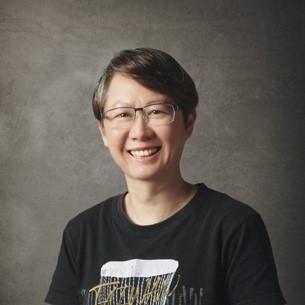| 教授 王昭雯 |
||||||||||||||||||||||||||||||||||||||||||||||||||||||
 |
||||||||||||||||||||||||||||||||||||||||||||||||||||||
|
English 王昭雯博士是一位細胞生物學家,專門研究胞器動力學和膜運輸。 她在 Daniel Klionsky 博士的實驗室攻讀博士學位,研究自噬作用。她加入了加州大學柏克萊分校 Randy Schekman 博士的實驗室進行博士後研究,利用胞外重組方法頗析將蛋白質從反式高爾基體網絡運送到細胞膜的分子機制。自 2007 年加入中央研究院植物暨微生物學研究所以來,王昭雯博士的研究主要集中在利用酵母菌和線蟲作為模式生物來揭示油滴生成與功能的分子機制。 她的團隊採用生物化學、分子生物學、細胞生物學和遺傳學等方法來研究細胞和發育過程,為脂肪包裝和脂質代謝的分子基礎提供新的線索。王昭雯博士也將她在膜動力學方面的專業知識擴展到油滴研究之外,將她的知識應用於不同的研究主題上。王昭雯博士於 2023 年 8 月加入國立成功大學生命科學系,新團隊將在既定努力的基礎上,為推進油滴和膜動力學的研究貢獻新的視角。 研究方向: 油滴的生成機制和油脂恆定調節 油滴是一個細胞用來儲存中性脂肪和專司油脂代謝的胞器。油滴的細胞學研究在近年大幅地成長,在不同的細胞形式,油滴的大小和數目不盡相同,這也反映出不同細胞中油脂代謝的意義不同。油滴與細胞中幾乎所有的胞器進行互動,參與油脂的運送和代謝。近年來,隨著油滴在細胞中可能參與多種嶄新的功能也開始被廣泛地發表,當今細胞學上針對油滴的研究,已跳脫油滴在在油脂代謝層次的單一思維。 我們的研究目標是全方位地瞭解油滴生成機制、及油滴在參與細胞各種複雜現象所扮演的角色及其背後的調控邏輯。我們利用酵母菌作為模式生物系統來幫助我們有效率的篩選突變株,並逐步釐清油滴相關蛋白的分子功能。我們建構胞外系統,以期更進一步分析油滴相關蛋白所參與的分子機制。我們也利用秀麗線蟲作為模式生物系統,這個生物個體由約莫1000個體細胞所構成,結合生物影像、遺傳學、生物化學、分生物學及多體學的研究法,我們希望更進一步推進油滴及油脂代謝相關的基礎醫學研究。
脂質與膜的細胞生物學 脂質是構成生物膜的基本成分。 每個細胞中的胞器都具有獨特的形狀和專司的功能,也擁有獨特的膜脂質與蛋白質的組合。我們的研究重點在於了解不同的膜脂質如何有助於建立胞器的特性、影響膜蛋白的結構和功能、以及如何參與細胞活動。為了解決這些問題,我們透過操縱脂質生成酵素來改變油脂的組成,並採用了結合遺傳學、生物化學、脂質組學和細胞生物學的多種方法來探究脂質如何參與細胞機制的調控。 |
||||||||||||||||||||||||||||||||||||||||||||||||||||||
|
||||||||||||||||||||||||||||||||||||||||||||||||||||||
跳至主要內容
國立成功大學-生命科學系









